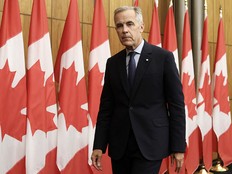GHERSON: Toronto's waterfront needs winning strategy for future success

Article content
Toronto’s economy needs a shot in the arm and the waterfront is the place to make it happen.
What was once the centre of our city’s business and cultural life is now a hodgepodge of aging attractions, residential, commercial and industrial uses and significant green space. Remarkably, it’s also home to the last undeveloped land — prime land — right at the front door of our city.
It presents an opportunity that no other waterfront city has: To revitalize and reinvigorate not only our economy, but civic life itself. Without a unifying vision, we risk squandering this golden moment today and for the next generation.
For too long we’ve debated as though every kilometre must look and behave the same as the next, when the truth is we have a 10-km opportunity to do it all.
This stretch, from Ontario Place in the west to the outer reaches of the Port Lands in the east and including the Toronto Islands, contributes $13 billion annually to our GDP and supports over 100,000 jobs. In the coming years the waterfront is set to house more than 100,000 more jobs and residents. Yet despite its strategic importance, our waterfront is nowhere near the economic driver nor the cultural magnet it could be.
Now is the time to get ahead of the curve by planning and co-ordinating, to grow investment and livability instead of spending another 10 years struggling to catch up with the growth we’ve always known was coming.
Toronto Region Board of Trade’s new report, Ripple Effect: Unlocking Toronto’s Waterfront Potential, offers a comprehensive strategy to transform Toronto’s central waterfront into a dynamic urban space redefining our city’s relationship with Lake Ontario. It’s a call to action for all stakeholders to create a unified vision and co-ordinate collective action.
There’s an appetite, as demonstrated by last week’s announcement that Toronto will be home to a new WNBA team in 2026. But to take advantage of the opportunity, we should revitalize the area surrounding Coca-Cola Coliseum into a lively, engaging space that extends the excitement beyond the arena. Consider that when compared to our international peers, Toronto’s waterfront ranks lower in terms of visitor appeal, arts, culture, dining and overall quality of place. The Waterfront BIA’s recently released report shows us a path to addressing the retail and tourism deficit.
Industry matters, too.
Critical economic assets, such as the Port of Toronto, need protection. As a recent Toronto Industry Network paper highlighted, through neglect and inattention we have undervalued the port as a strategic marine shipping asset. It brings in the cement and steel needed to build roads and other infrastructure, not to mention salt and sugar, all of which take trucks off our already congested highways.
RECOMMENDED VIDEO
Billy Bishop Airport, which generates $2.1 billion in GDP, is another key piece of strategic infrastructure on the lake whose future must be secured. It’s not just businesses that relies on the airport; residents, many of whom live in the area, make regular use of it, too. Indeed, as a recent poll showed, nearly 80% of Torontonians said that it makes sense for Toronto to have an airport downtown.
Managing these competing priorities hasn’t been easy. Each requires something that may put it into conflict with another priority. In Ripple Effect, we identify principles and solutions to unlock the waterfront’s potential. These include developing iconic landmarks to attract a larger visitor economy, creating vibrant hubs that draw continuous foot traffic, improving connectivity to, from and within the area and offering diverse housing options.
To make it all work in harmony, we need a strategic joint effort among waterfront companies, business leaders and government. This effort must focus on moving beyond “either-or” and understand that for our waterfront to be successful it necessitates a “both-and” approach.
Throughout Toronto’s history, our working waterfront has served as a vital anchor for trade, commerce, production and connectivity and so it must be again.
— Gherson is president and CEO of the Toronto Region Board of Trade.













Postmedia is committed to maintaining a lively but civil forum for discussion. Please keep comments relevant and respectful. Comments may take up to an hour to appear on the site. You will receive an email if there is a reply to your comment, an update to a thread you follow or if a user you follow comments. Visit our Community Guidelines for more information.